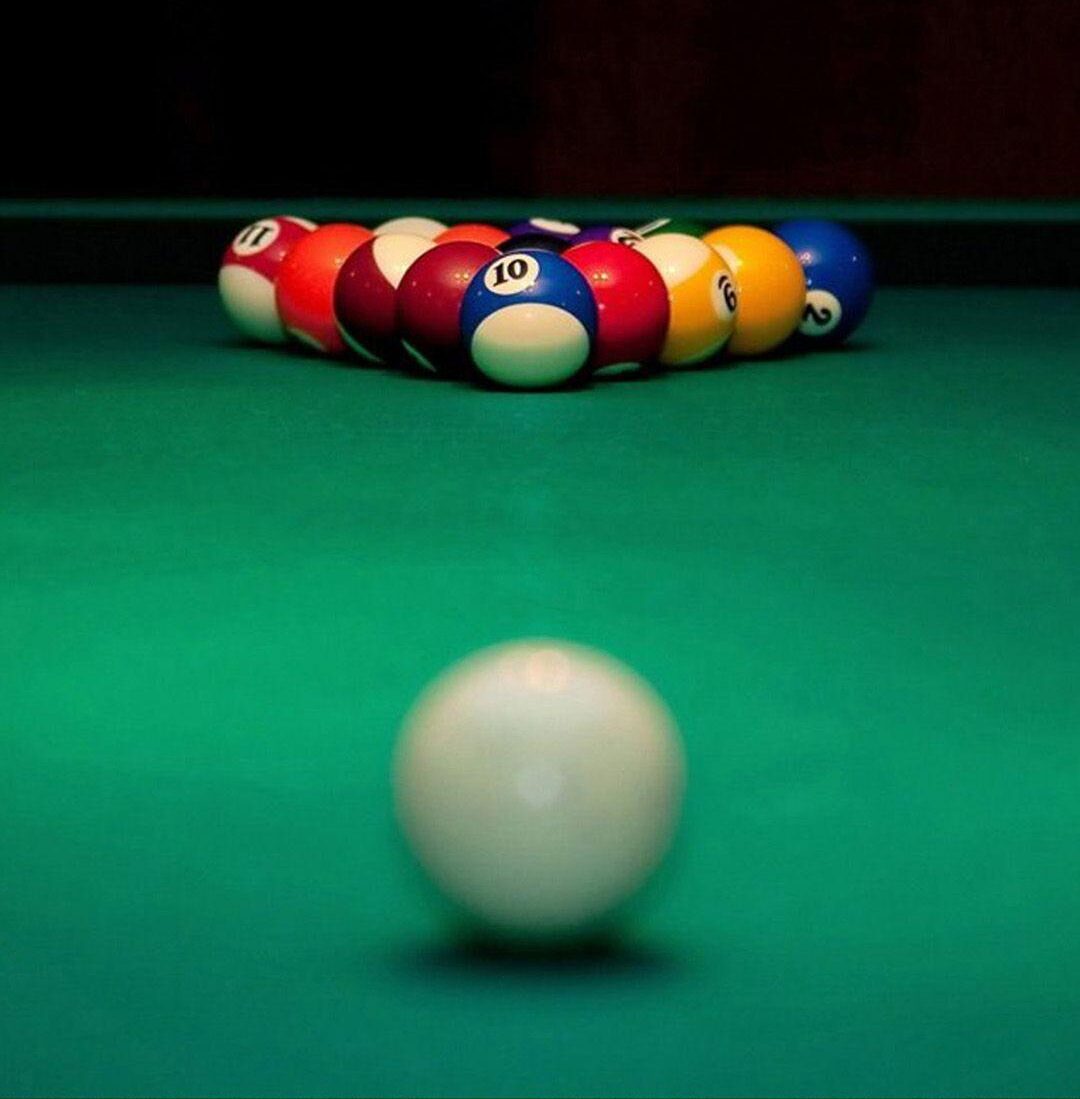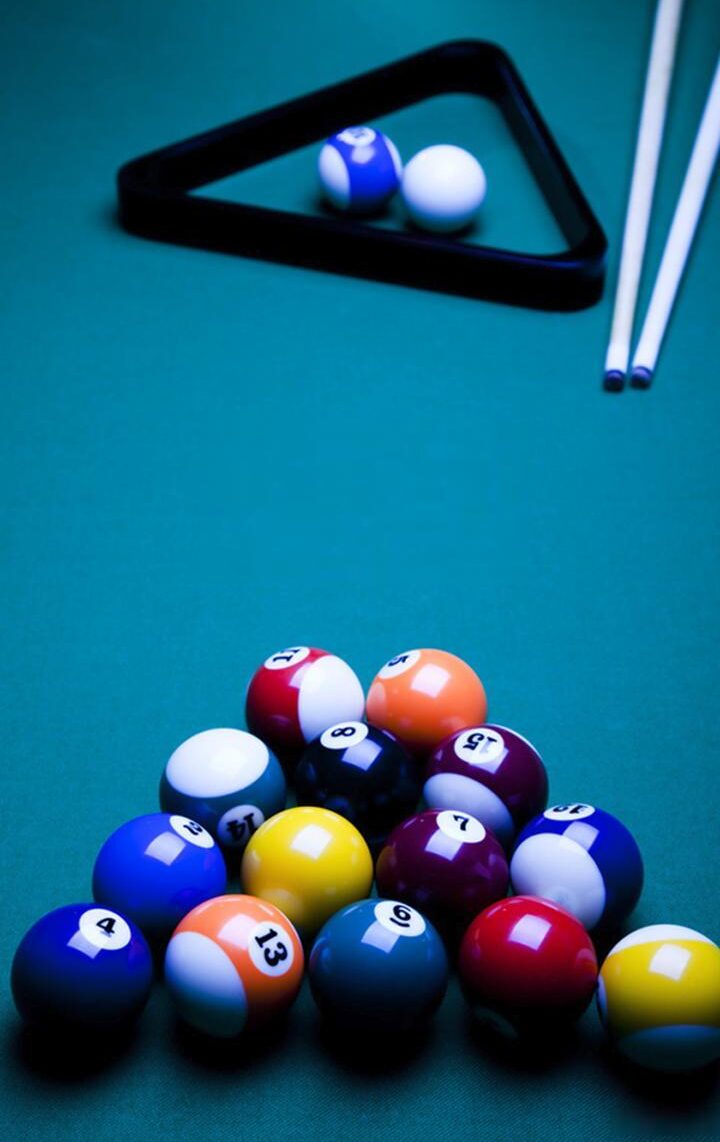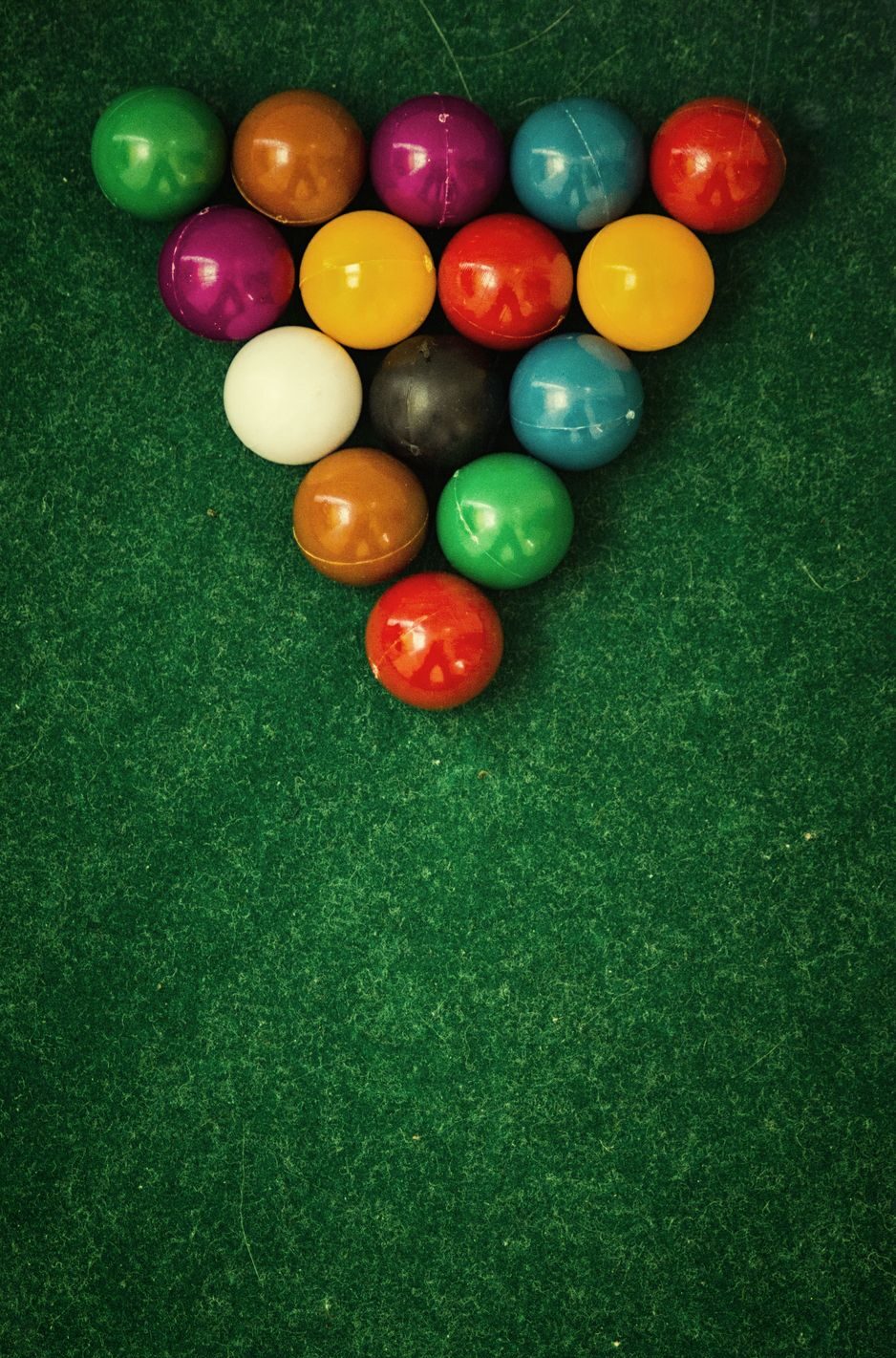CUE SPORTS
Suitable for all levels and abilities, come and enjoy a game of Billiards, Snooker or Pool on traditional tables.THE GAME
Cue sports, also known as billiard sports, are a wide variety of games of skill generally played with a cue stick, which is used to strike billiard balls and thereby cause them to move around a cloth-covered billiards table bounded by elastic bumpers known as cushions.
There are three major subdivisions of games within cue sports:
- Carom billiards, referring to games played on tables without pockets, typically 10 feet in length, including straight rail, balkline, one-cushion carom, three-cushion billiards, artistic billiards and four-ball.
- Pool, covering numerous pocket billiards games generally played on six-pocket tables of 7-, 8-, 9-, or 10-foot length, including among others eight-ball (the world’s most widely played cue sport), nine-ball (the dominant professional game), ten-ball, straight pool (the formerly dominant pro game), one-pocket, and bank pool.
- Snooker, English billiards and Russian pyramid, games played on a billiards table with six pockets called a snooker table (which has dimensions just under 12 ft by 6 ft), all of which are classified entirely separately from pool based on a separate historical development, as well as a separate culture and terminology that characterize their play.

Playing surface
PlayPoint is offering 2 9-foot length Pool Tables and 1 12-foot length Billiard Table made of high quality timber and slate.
PLAYING Rules – Billiards

- Each player uses a different color cue ball and attempts to score more points than their opponent and reach the previously agreed total required to win the match.
- All games of Billiards shall be played with three balls, consisting of a red, yellow and white.
- Each of the two players has their own cue ball, one having the white ball, the other the yellow ball.
- Both players must decide who is to break off first, and this is done by both players simultaneously hitting their cue ball the length of the table, hitting the cushion and returning back towards them. The player who gets their cue ball nearest to the baulk cushion at the end the shot was played gets to choose who breaks.
- The red is then placed on the Billiards sport and then the player going first places their cue ball in the D and then plays the ball.
- Players then take it in turn to attempt to score the most amount of points and eventually win the game. Players can score in three ways:
-
- In-off: When your cue ball hits one of more balls and then goes down a pocket (2 / 3 points).
- Pot: This is when any ball other than your cue ball goes into a pocket (2 / 3 points).
- Cannon: This happens when the cue ball hits both other balls (2 points).
- Combinations of the above can be played in the same shot, with a maximum of ten points per shot possible.
- Players remain on the table until they fail to make a scoring shot.
- Following a foul, the opposing player has the option of having the balls all put on their spots or leaving the table as it is.
- The winner of the game is the first player to the points total that was declared the winning total before the game.
PLAYING Rules – Pool
- Before the game begins, the object balls should be placed in a triangular rack and positioned at the lower end of the table so that the apex ball of the rack lies on the foot spot. The order of the balls should be random apart from the black 8-ball, which should be placed in the middle of the third row. The white ball should be placed anywhere behind the service line on the table.
- If it is the first game in a match, a coin should be tossed to decide who gets to choose whether to break. After that, the break is taken in turns.
- To make a legal break, the player must hit the balls and ensure that four balls hit cushions and that the cue ball doesn’t go down a pocket. If the 8-ball is potted on the break, the player is entitled to ask for a re-rack.
- The first player to pot an object ball will then have to continue to pot the balls from that category (stripes or solids). The opposition player will have to pot the other group.
- A player will continue to make shots until they foul, or fail to pot an object ball. Then it is the turn of the opposing player. Play continues like this for the remainder of the game.
- If a player commits a foul, the opposition player is entitled to place the cue ball anywhere on the table. There are numerous fouls in pool, some of the most common being:
- Failing to hit your own object balls.
- Hitting the cue ball off the table.
- Potting one of the opposition’s object balls.
- Hitting the cue ball twice.
- Pushing the cue ball rather than striking it.
- A player taking a shot when it is not their turn.
- Once all of a player’s balls have been potted, they must then sink the 8 ball. They must first designate which pocket they intend to pot the 8-ball in and then do as state. Failure to do so will result in the opposition player returning to the table. If the player pots the 8 ball in any other pocket other than the nominated one, they forfeit the game.

PLAYING Rules – Snooker
Snooker may be played by two players independently, or by more than two players as sides. The Game is summarized in paragraphs (a) to (h) below.
- Each player uses the same White cue-ball and there are twenty-one object balls – fifteen Reds each valued 1, and six colours: Yellow valued 2, Green 3, Brown 4, Blue 5, Pink 6 and Black 7.
- Scoring strokes in a player’s turn are made by potting Reds and colours alternately until all the Reds are off the table and then the colours in the ascending order of their value.
- Points awarded for scoring strokes are added to the score of the striker.
- Penalty points from infringements are added to the opponent’s score.
- A tactic employed at any time during a frame is to leave the cue-ball behind a ball not on such that it is snookered for the next player. If a player or side requires more points than are available from the balls remaining on the table, then the laying of snookers in the hope of gaining points from fouls becomes most important.
- The winner of a frame is the player or side:
-
- with the highest score;
- to whom the frame is conceded; or
- to whom the frame is awarded
- The winner of a game is the player or side:
-
- winning the most, or required, number of frames;
- making the greatest total where aggregate points are relevant; or
- The winner of a match is the player or side winning the most games or, where aggregate points are relevant, with the greatest total.